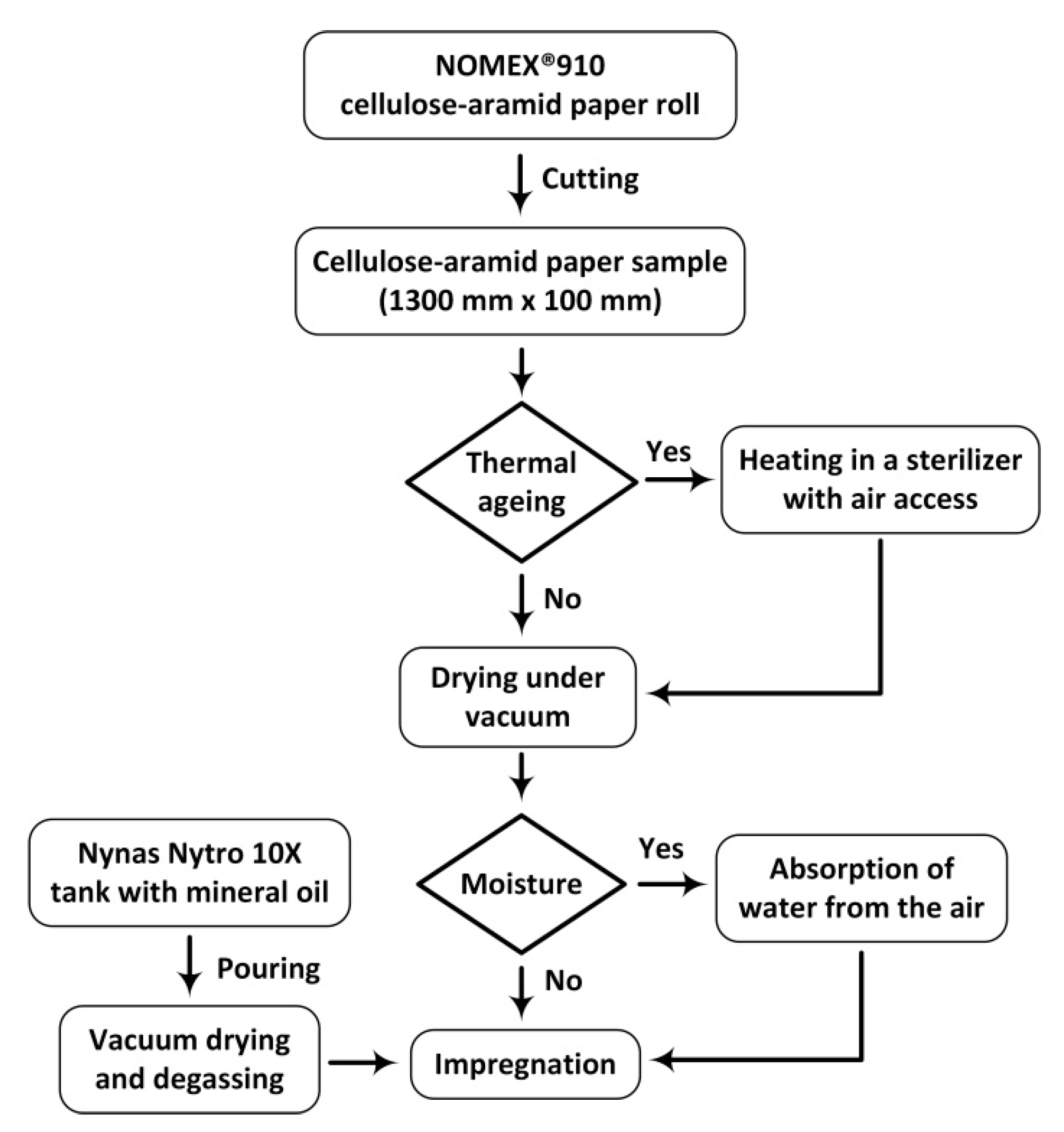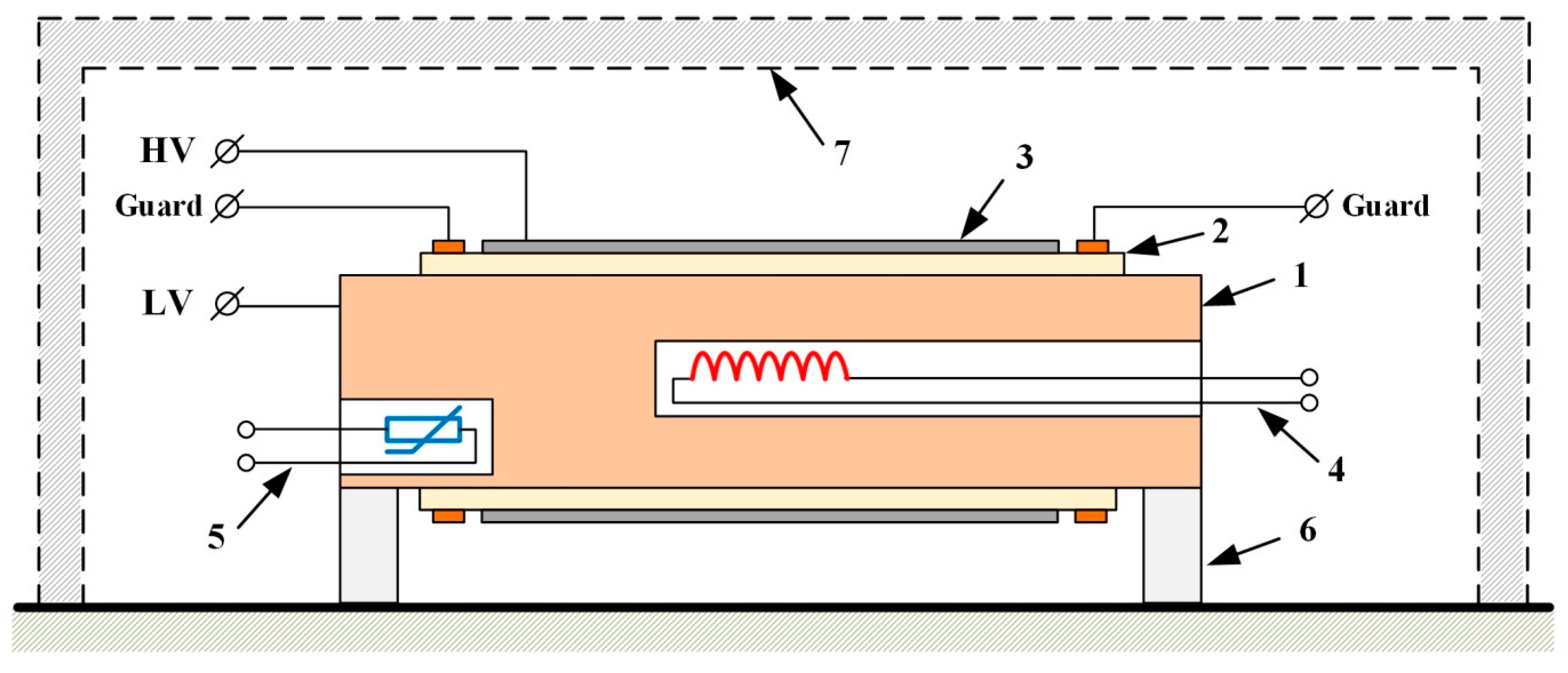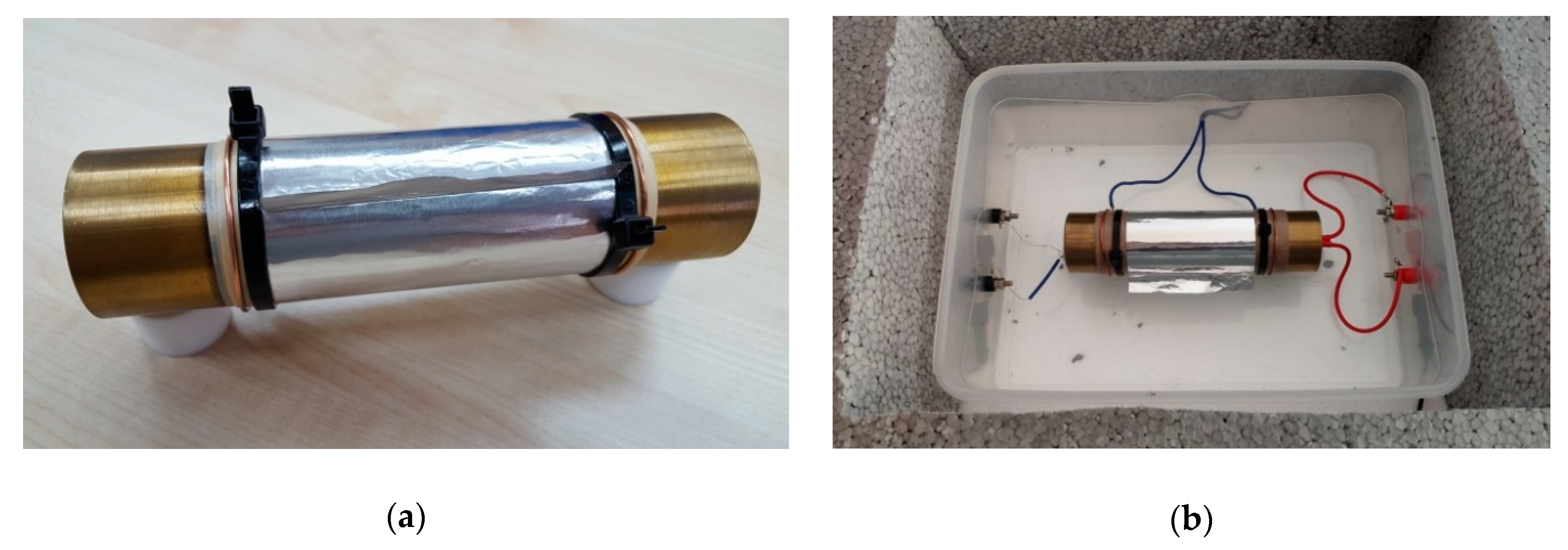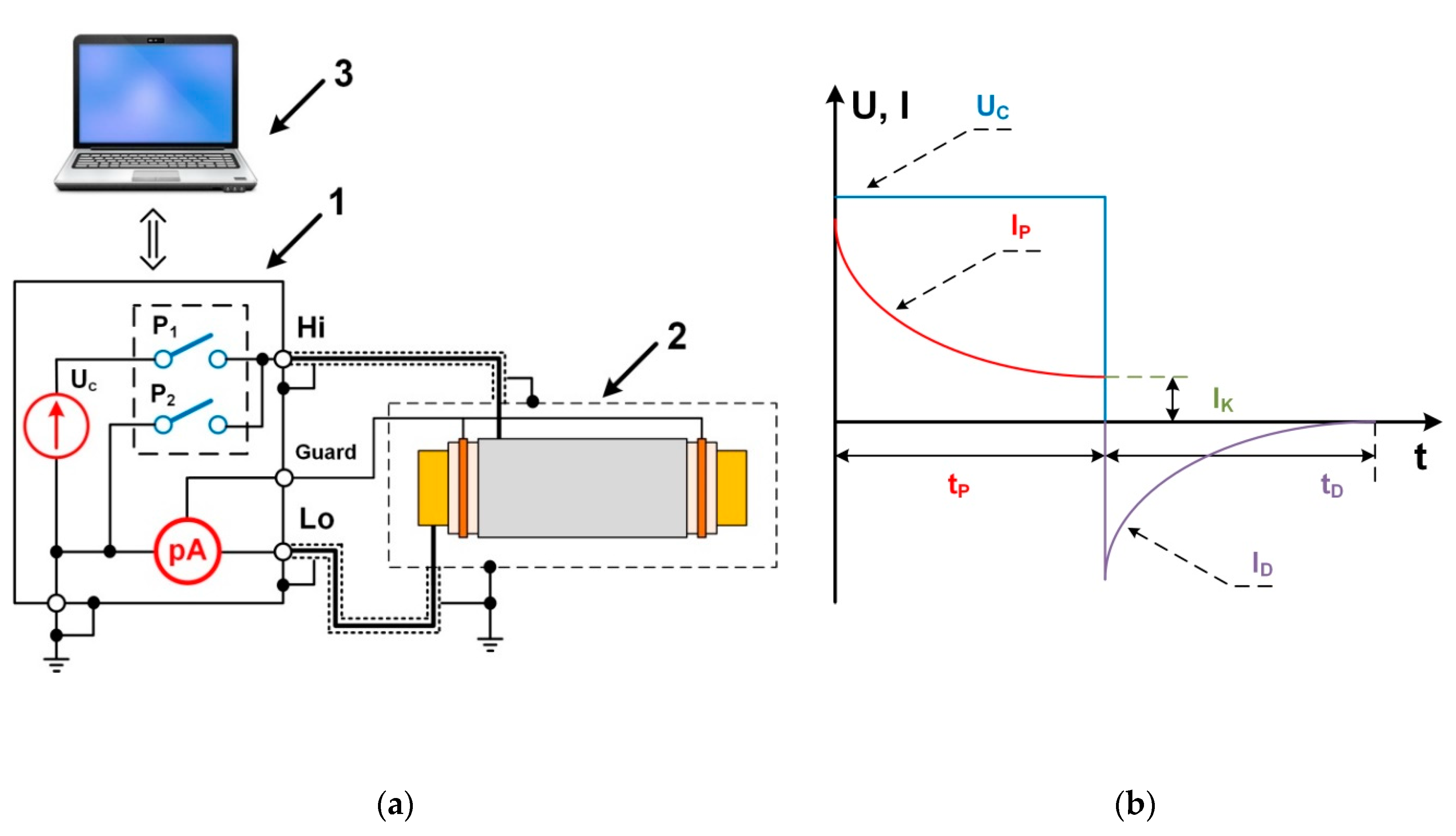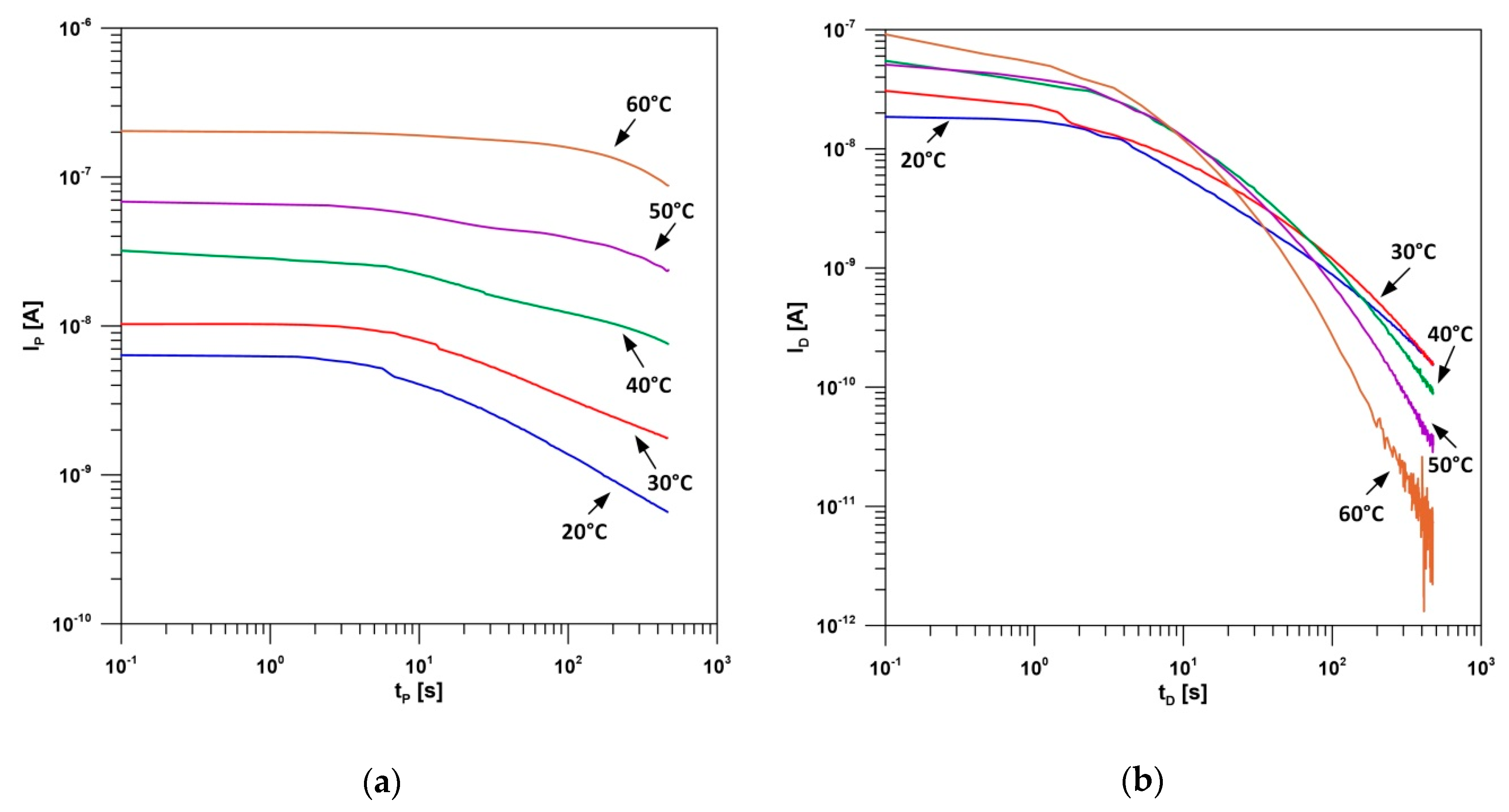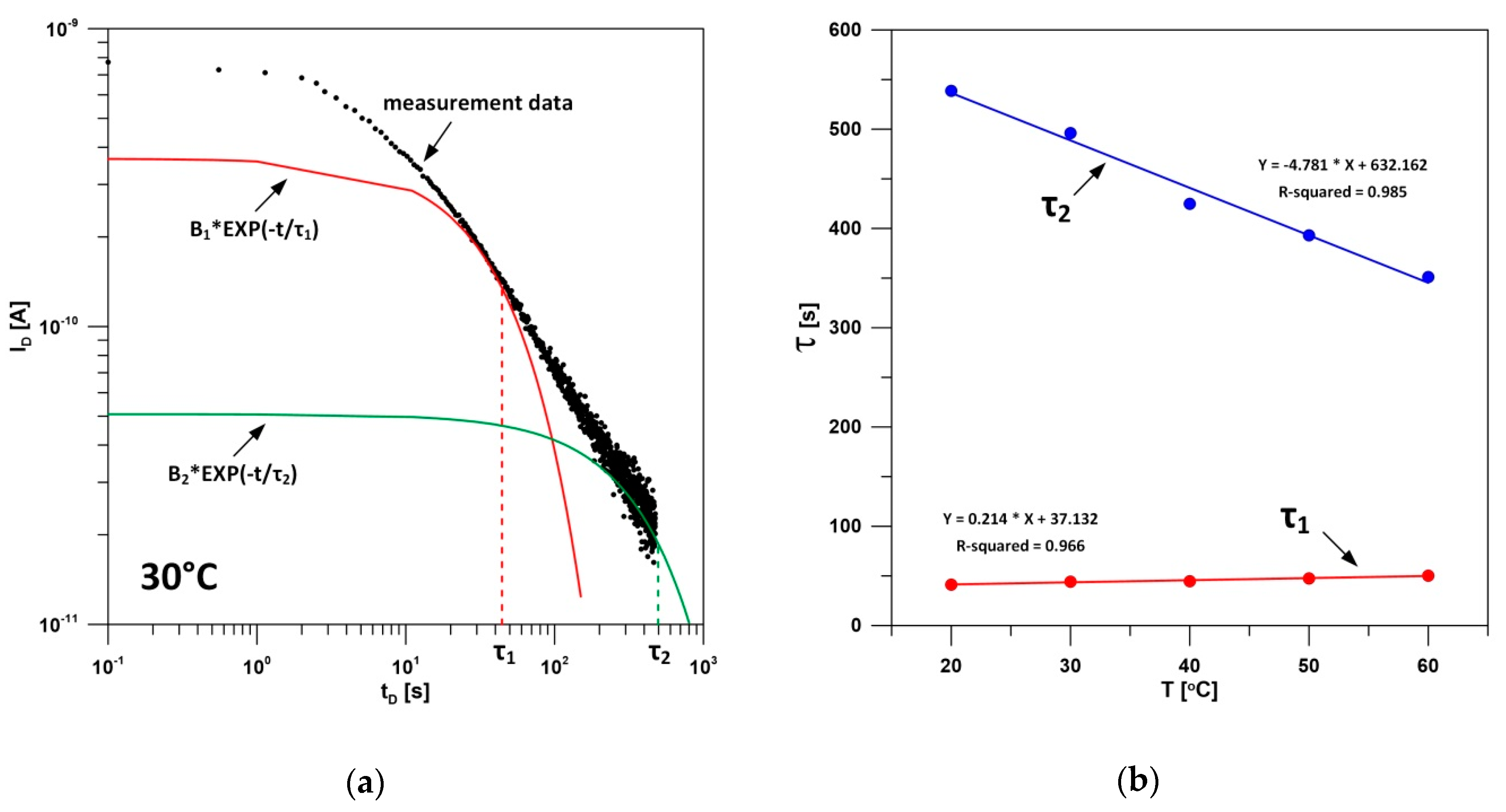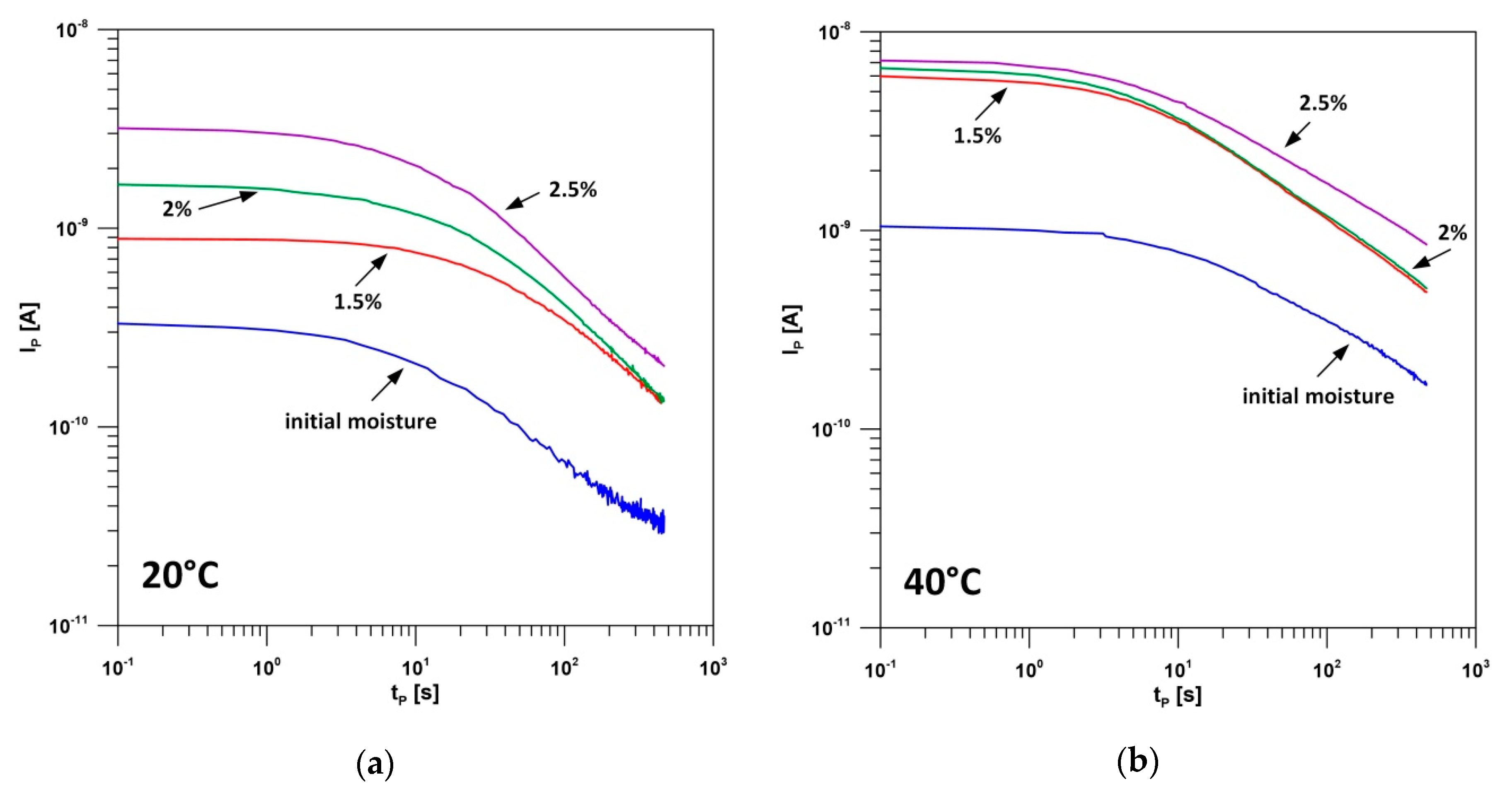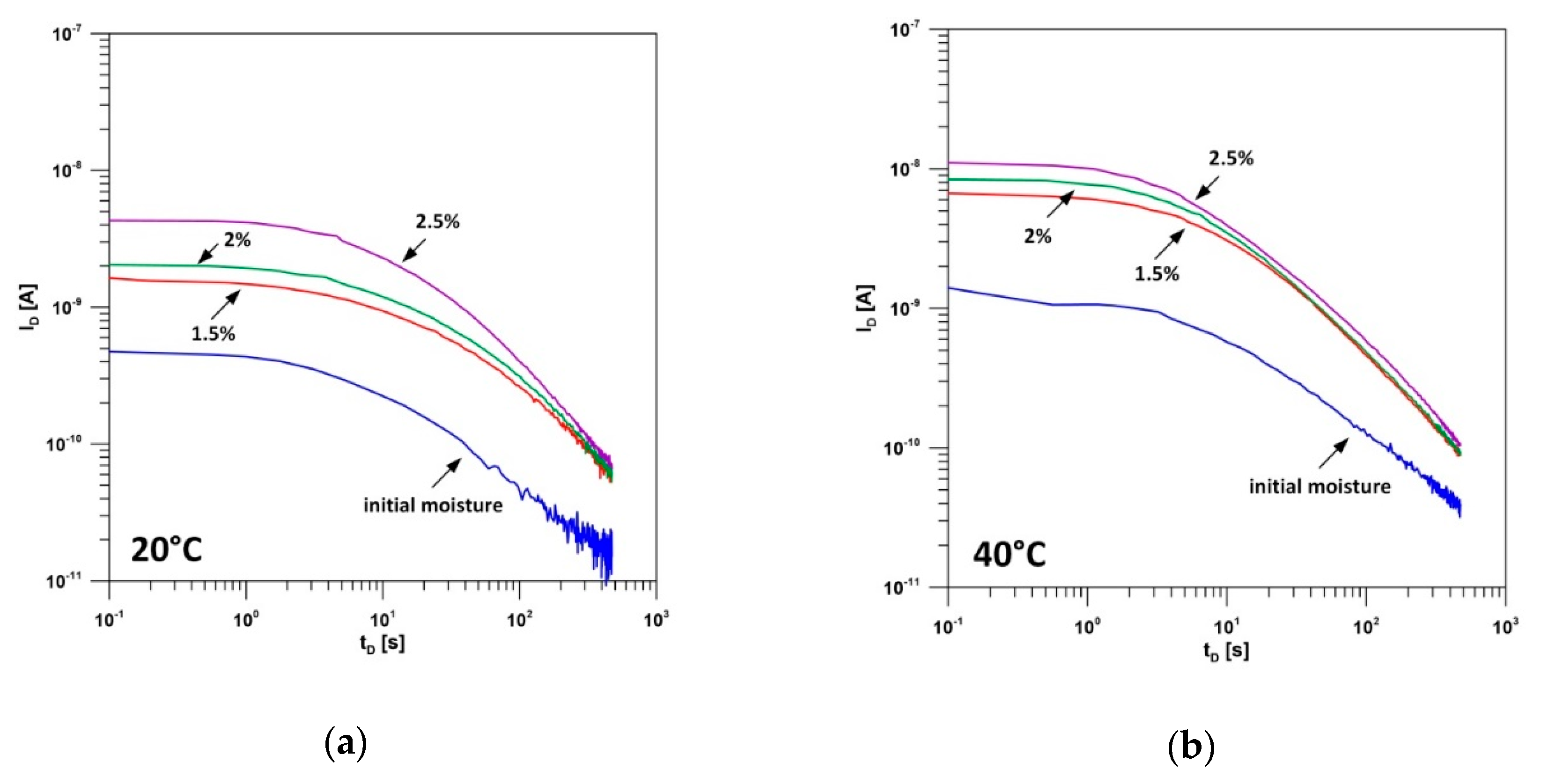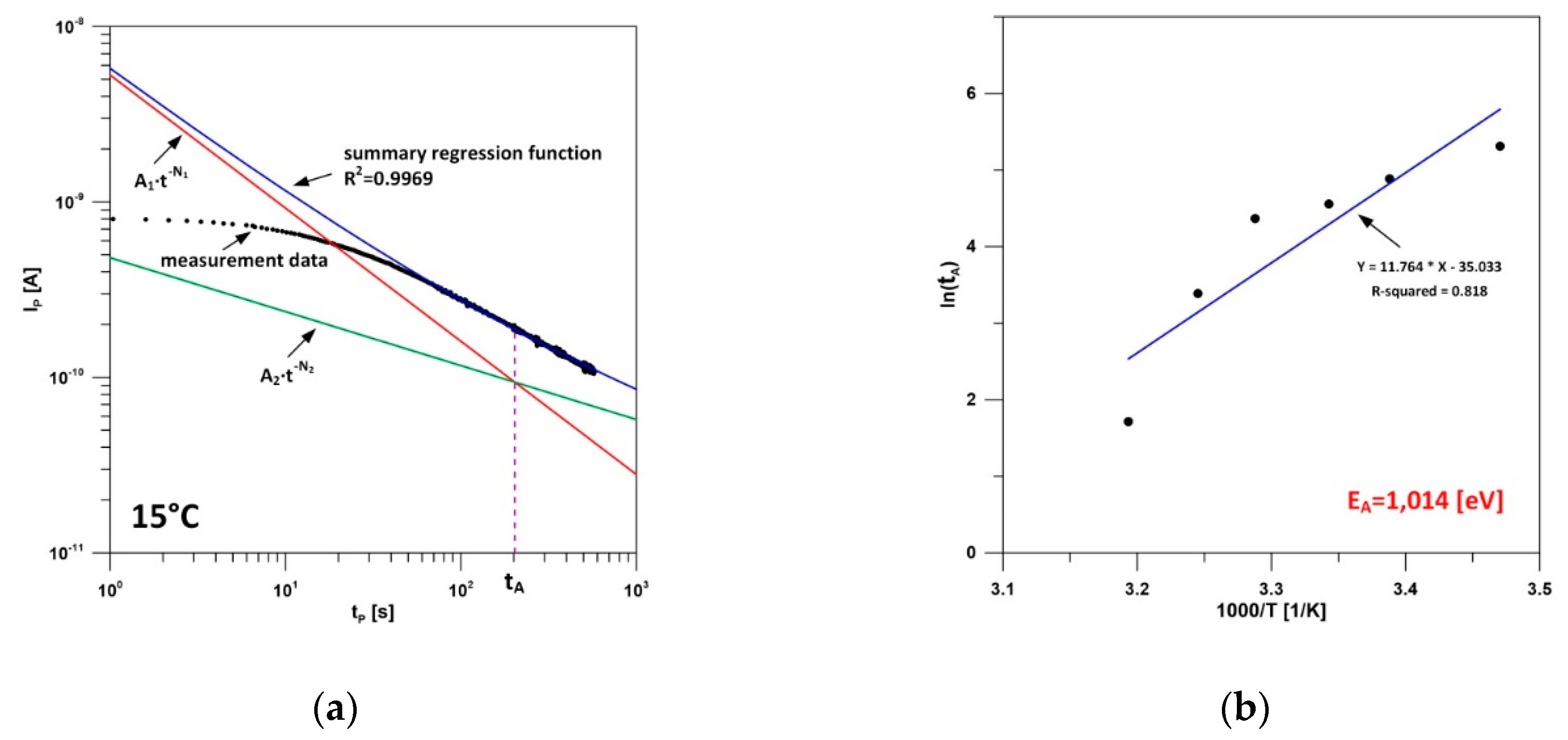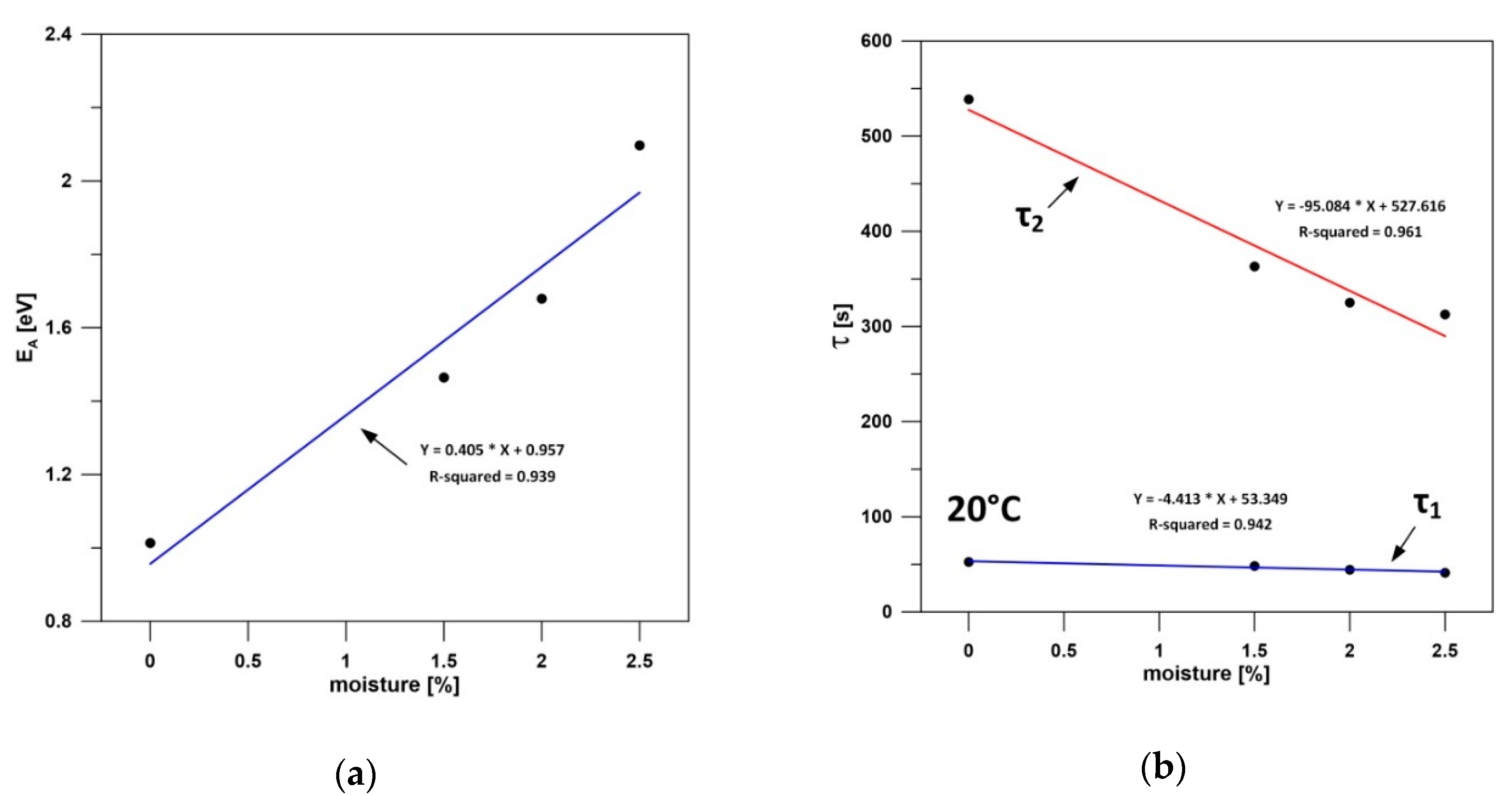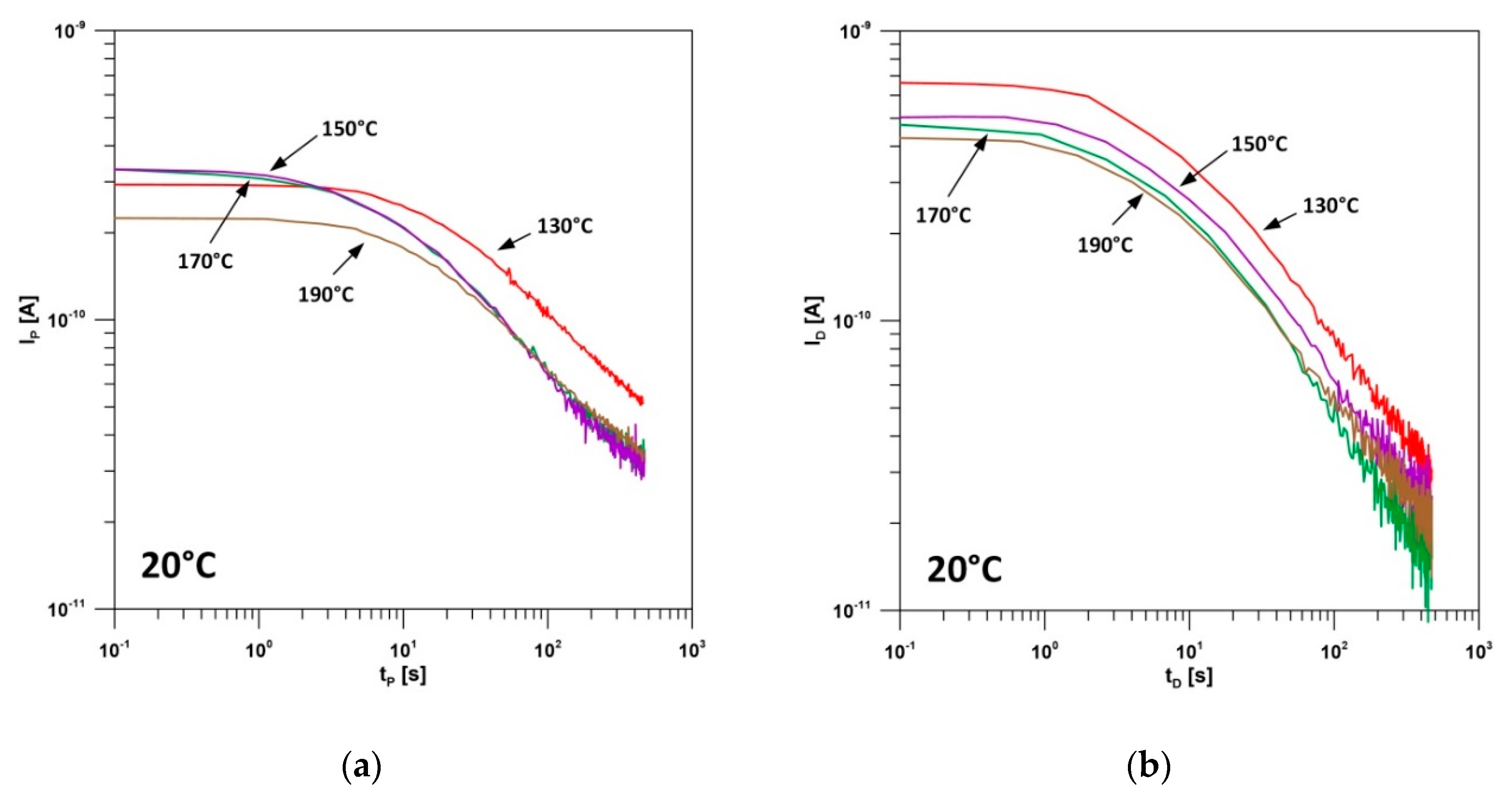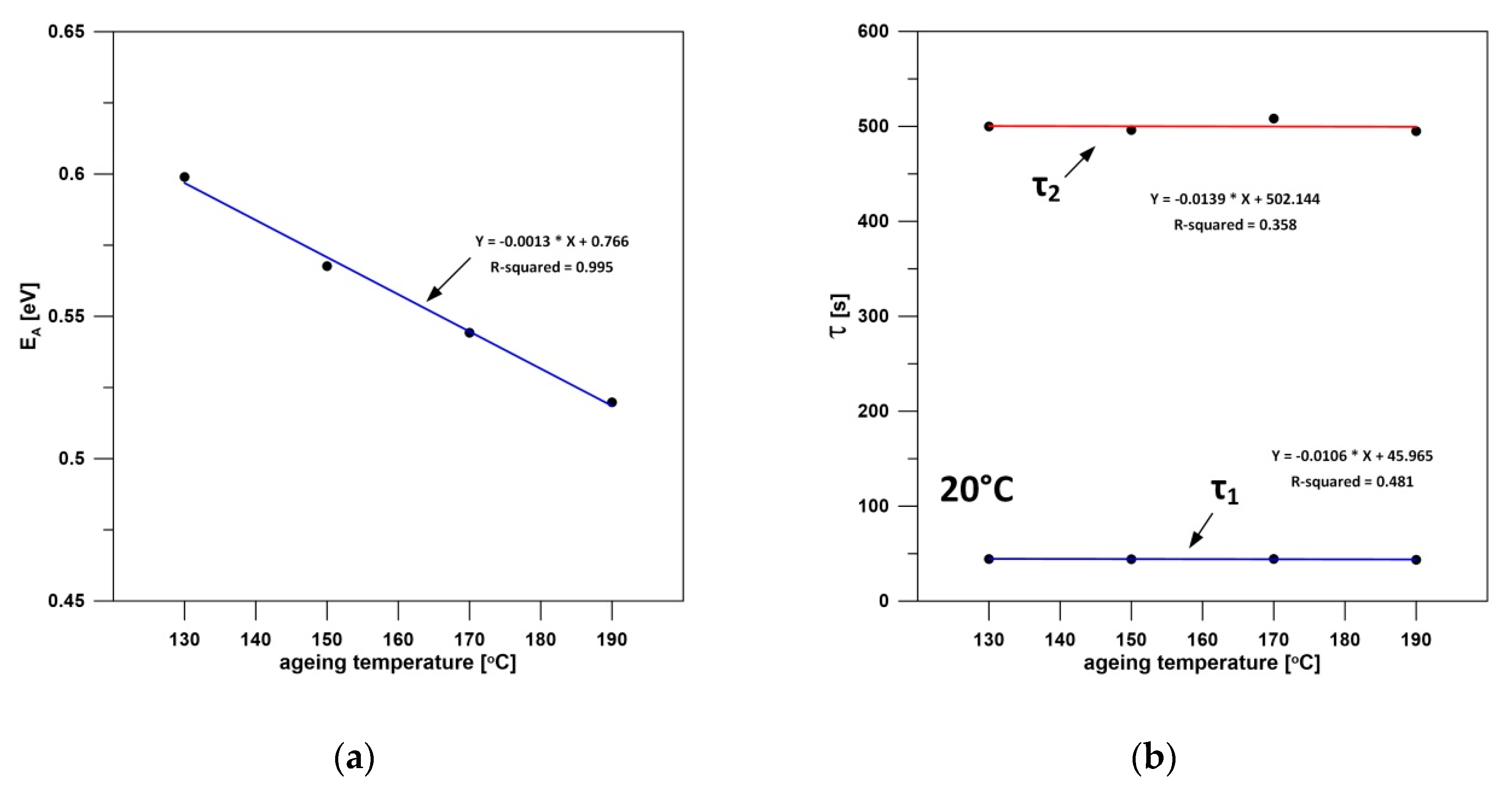1. Introduction
Power transformers are undoubtedly one of key elements of the electric energy distribution system. Their unfailing operation determines not only continuous energy deliveries for recipients, but also stable operation of the whole power system. The effects of a possible breakdown of a power transformer are always multidimensional, starting from purely economic ones, to logistics, to threats to property and life, as well as possible environmental contamination. For this reason, transformer units which are regarded as key (e.g., power plants’ step-up transformers or distribution transformers working in critical power system nodes), are equipped with automatic security systems, monitoring systems for a number of parameters determining the technical condition of the unit, and are subjected to diagnostic procedures recommended by respective standards or operating instructions. Bearing in mind the complex design of power transformers as well as their almost unique structure, ensuring unfailing continuous operation for a few dozen years is a difficult problem, which requires extensive scientific and expert knowledge.
Particularly for new power transformers, the technical condition of the electric insulation saturated with dielectric fluids is regarded as the basic hazard to safe operation, where the key factors are the level of moisture as well as the degree of ageing, defined as the degree of the materials’ thermal degradation [
1,
2,
3,
4,
5,
6]. Despite decades of designing and manufacturing power transformers, cellulose electric paper saturated with insulating mineral oil continues to be used as the basic electric insulation system. However, various kinds of synthetic and natural esters have become more and more recognized as substitutes for mineral oil [
4,
5,
6,
7,
8]. One of the key factors accelerating the process of departing from mineral oils as the impregnating fluid, apart from improved electric, physical and chemical parameters of esters as compared to mineral oil, is their considerably better biodegradability. Likewise, we are constantly looking for a material that would effectively replace the commonly applied cellulose. At present, the highest hopes are related to synthetic papers manufactured on the basis of aramid fibers. This material was invented and patented by DuPont™ in the 1960s. DuPont™ produce a broad assortment of products to be used as electric insulation material in electric machines (also in power transformers) under the commercial name NOMEX
® [
6,
7,
8,
9]. As compared to the classic cellulose paper, aramid paper is characterized by considerably better electrical properties (e.g., higher dielectric strength, higher volume and surface resistivity), physical properties (e.g., considerably higher breaking strength) and chemical properties (better resistance to ageing as a result of higher thermal resistance over continuous operation). Possible disadvantages of the aramid material include a higher price, lower ability to absorb dielectric fluids (worse impregnation as compared to cellulose), significantly higher rigidity than cellulose paper of similar thickness, which substantially complicates the process of manufacturing the insulation system for a transformer with complex geometry. In addition, intensification of the phenomenon of generating electrostatic charges as a result of stream electrification in transformers with induced circulation of dielectric fluid has also been observed [
10,
11]. Too high a presence of electrostatic charges in the solid insulation of a working transformer may lead to the development of partial discharges, accelerated ageing processes and, consequently, to complete discharge.
In order to use the unquestionable advantages of aramid papers in the insulation of power transformers with induced circulation of dielectric fluid, DuPont™ proposed a hybrid material, in the form of cellulose paper coated on both sides with a thin layer of synthetic aramid paper. This has resulted in a higher temperature class as compared to clean cellulose paper, an improved material dielectric fluid absorption capacity, and the impregnation capacity as compared to clean aramid paper, among other benefits. The article presents tests conducted on samples of insulation manufactured from this kind of material, which DuPont™ sells under the trade name NOMEX
®910 [
12]. A more detailed description of cellulose–aramid paper is presented in
Section 2 of this article.
Because NOMEX
®910 electro-technical paper contains a considerable amount of cellulose, its use in the insulation of a power transformer involves practically the same hazards as in a classic oil-saturated cellulose–aramid insulation. In brief, over the course of use, cellulose fibers, as a result of the presence of oxygen molecules, water, and elevated temperature, are subjected to the processes of oxidization, hydrolysis and pyrolysis, resulting in the bonds of cellulose macromolecules being torn apart (reduced degree of polymerization) and deterioration, first of all, of mechanical parameters (e.g., breaking strength). In addition, the described cellulose ageing processes generate a continuous increase in the degree of the material’s moisture due to the fact that water is one of the products of decay of the bonds of cellulose macromolecules. The increased moisture of cellulose paper significantly reduces electrical parameters (e.g., dielectric strength or volume resistivity), becoming a significant threat to further safe operation of the transformer’s insulation. In order to monitor the so-called degree of insulation’s technical wear in transformers, a number of diagnostic methods are applied, which estimate the degree of moisture as well as the ageing of cellulose paper impregnated with dielectric fluids. Therefore, a question arises: can the diagnostic methods applied so far, developed for impregnated cellulose papers, also be applied for new cellulose–aramid papers? The article presents the results of tests using the polarization diagnostic method analyzing the profiles of polarization and depolarization currents over time. This method is broadly used in diagnostic practice, and is referred to using the abbreviation PDC [
7,
13,
14,
15].
2. Materials Used for the Tests
As earlier described in the article’s abstract, for experimental tests the authors used solid insulation made of NOMEX
®910 cellulose–aramid electro-technical paper, manufactured by DuPont™. The basis of this material is a high quality thermally improved cellulose pulp. A sheet of electro-technical paper formed from it is then coated on both sides with a thin layer of a binder from a high temperature meta-aramid polymer (NOMEX
®). This procedure leads to an increase in the temperature class of the new material, which, for operation in mineral oil, increases to 130 °C (for operation in the environment of esters, it is 140 °C) [
12]. In the case of electro-technical paper made of cellulose only, for Kraft type papers, the temperature class is 110–120 °C for operation in mineral oil.
Figure 1 presents the cross-section of NOMEX
®910 material structure and a real photograph of a small sample.
An approx. 10 °C increase in the temperature class of cellulose–aramid papers as compared to Kraft type cellulose papers is obviously not their single advantage. The basic objective of the designers was to obtain an increased mechanical strength of the new material, more precisely, tearing, breaking and tensile strength. It was assumed that, while in the case of the new cellulose–aramid material the listed parameters values will be similar to classical cellulose paper, along with the maintenance-related ageing process, the new material will definitely keep the values required by the standards for a longer time. This results from the fact that aramid fibers demonstrate a considerably higher resistance to the effect of temperature (the temperature class of electro-technical papers made of aramid only for operation in the air is 220 °C, e.g., NOMEX
®410 [
9]), at the same time, they provide significant strengthening for thermally weakened cellulose. As a result, during operation of the transformer and the inevitably increasing degradation of cellulose (chains of cellulose macromolecules being torn apart as a result of the oxidization, hydrolysis and pyrolysis phenomena), the aramid component will continue to be intact, ensuring the paper’s strengthened mechanical structure, and, consequently, will extend the technical life of the insulation and the whole transformer. The material’s good saturability with dielectric fluids was observed, as well as an increased dielectric strength during electric tests in the environment of mineral oil, which is particularly important [
16]. At present, the substantially higher price as compared to Kraft type electro-technical papers should be considered the only disadvantage of NOMEX
®910 material. However, because the material appeared on the market just several years ago, there are no statistically significant data describing many aspects related to its maintenance in power transformers. The most important aspects include: migration water processes between oil–aramid–cellulose and the time of setting the hydrodynamic balance depending on the temperature of the whole insulation; heat dissipation processes from the inside of the insulation (particularly when the surface of cellulose–aramid paper is contaminated with insulating oil ageing products); and, finally, the effectiveness of the methods applied so far to diagnose the level of moisture and ageing of the impregnated insulation. In the latter case, this article attempts to answer this very significant aspect with reference to the PDC method. Doubts in this respect can still be a valid factor that discourages potential transformer manufacturers from applying the insulation concerned to a broader extent.
Table 1 presents basic technical parameters of 0.08 mm thick NOMEX
®910 paper, which has been used in the tests.
Nynas inhibited mineral insulating oil with commercial symbol Nytro 10× was chosen as the impregnating fluid. Mineral oils of this Swedish company are very often applied in power transformers, and installed in European electric energy distribution systems.
Table 2 states basic technical parameters of this dielectric fluid.
3. Sample Preparation Method
The insulation samples were made of 80 μm thick Nomex®910 transformer cellulose–aramid paper. It is the most frequently used type of cellulose–aramid insulation applied in contemporary new power transformers. The insulation paper was cut into 1300 mm × 100 mm strips. Then, before impregnation, the samples were subjected to a process of accelerated ageing by placing them in a sterilizer and heating at four different temperatures (130 °C, 150 °C, 170 °C and 190 °C) with the access of air for a definite time. In this way, 5 degrees of sample ageing were obtained: 0–1 h of ageing (fresh paper); 2–25 h of ageing at 130 °C; 3–25 h of ageing at 150 °C; 4–25 h of ageing at 170 °C; and 5–25 h of ageing at 190 °C. After the stage of accelerated ageing, the samples were placed in vacuum and heated at 120 °C for 2 h to be dried before impregnation.
Directly after the accelerated thermal ageing processes and drying in vacuum, the samples were subjected to a process of weight-controlled dampening, which consisted of the paper absorbing moisture directly from the surrounding air for a definite time. The degree of sample moisture was determined as the percentage growth in paper weight to a predefined amount. This has resulted in 4 degrees of sample moisture for all 5 degrees of ageing: 1—initial residual moisture (sample impregnation directly after the vacuum drying process, the adopted degree of sample moisture was close to 0%); 2—1.5% sample moisture; 3—2% sample moisture; and 4—2.5% sample moisture. Directly after the weight-controlled dampening process, the samples were subjected to the process of impregnation with the dielectric fluid. Nynas inhibited mineral insulating oil with commercial symbol Nytro 10× was used for this purpose. Before the impregnation process, insulating oil was initially degassed and dried in a vacuum at a temperature of 60 °C for 2 h, reducing the content of water dissolved in oil to approx. 10 ppm.
Figure 2 shows the entire sample preparation process as a diagram.
The earlier described parameters of the sample ageing and moisture processes are certainly not accidental. Accelerated thermal ageing of cellulose paper in the environment of atmospheric air causes a significant loss in the degree of polymerization of cellulose macromolecule chains. On the basis of the authors’ past long-term studies and literature data [
18,
19] it can be stated that the selected ageing time as well as temperature range resulted in a gradual, proportional loss in the degree of cellulose polymerization from a value equal to approx. 1000 (non-aged samples) to approx. 200 (ageing in 190 °C for 25 h). The described scope of changes in the degree of cellulose polymerization corresponds to the whole technical life of cellulose insulation in power transformers [
20]. Likewise, it can be assumed that the degree of moisture of cellulose–oil insulation in the range between approx. 0% and 2.5% in practice corresponds to moisture recorded in the statistical majority of power transformers working in electric energy distribution systems of many states [
21,
22]. Due to some technical problems and the long process of sample moistening, the decision was made to resign from values exceeding 2.5% of water in paper, knowing that values reaching as much as approx. 5% are recorded in strongly worn out transformers. It was decided to consider higher degrees of sample moisture in future tests.
After the impregnation process, the samples were wound on the low potential electrode, which was a brass roll of 160 mm length and 40 mm diameter. In this way, 10 layers of insulation were obtained. The high potential electrode was made of a thin 80 mm aluminum foil. The foil was wound on the roll with the sample.
Figure 3 shows a cross section of the electrode system and
Figure 4 shows the system ready for testing. The tests were carried out in a hermetic chamber equipped with a system for temperature adjustment and stabilization. The tests were performed in the temperature range from 20 °C to 60 °C, which is consistent with the values typical of PDC diagnostics [
13,
14,
15].
4. PDC Method
Figure 5 presents a diagram of the connections used in diagnostics of the condition of the paper–oil insulation using the PDC method and time characteristics of currents and voltages which were recorded while performing the tests. The PDC method consists of applying to the examined object (in the industrial diagnostics, these are clamps of a power transformer) a source of DC voltage and measuring and recording I
P polarization current for a certain period of time t
P. After time t
P, the voltage source is disconnected, and the examined object’s measuring clamps are shortened. Then, the measurement and registration of I
D depolarization current begins, also for a certain period of time t
D. I
P current decreases over the time of impact of the voltage source until the course is fixed at a certain level I
K resulting from a finite resistivity value of the insulation being examined. On the other hand, I
D current has the opposite sign to I
P current and also decreases over time. Finally, the course of I
D current decreases until zero is achieved, when the examined system discharges completely.
From the point of view of diagnosing the condition of oil insulation in power transformers, it is extremely important to select the right value of UC charging voltage and IP and ID current recording times. On the one hand, too low a value of UC voltage will cause substantial measuring difficulties (in the PDC method typical recorded current values are nA fractions), and thereby growth in interference (external and resulting from the presence of electrostatic loads in the insulation being examined). On the other hand, too high a UC value will cause the “masking” effect of the conductivity element of IP current (problems in precise registration of the absorption element of IP current) and can cause non-linear relaxation phenomena, significantly hindering the correct interpretation of the received measurement results. For this reason, it is recommended for the UC voltage value in the diagnostics of the condition of the paper–oil insulation in power transformers not to exceed 1 kV. The relaxation mechanism time constant values existing in such insulation require the polarization and depolarization time not to be shorter than min. 1000 s.
When relay P
1 is switched on (
Figure 5a), the U
C charging voltage is put on the object being examined and I
P polarization current flowing in the measuring circuit is registered (
Figure 5b). After time t
P, the control system switches P
1 relay off and P
2 on. Then, I
D depolarization current is recorded in the circuit. The measurement is ended after time t
D, when P
2 relay is opened. The PDC method requires very careful shielding of the measurement cables, the examined object, and the measurements to be made with reference to the joint earth potential.
In the first approx. 100 s of the polarization and depolarization current measurement, the recorded values are mainly determined by the properties of the insulating oil, i.e., first of all its conductivity, provided that in this case important factors are the following: degree of moisture, contamination, acid value or the effect of temperature. Increasing oil conductivity causes almost proportional increases in the initial polarization current values, therefore it is possible to fix oil conductivity from I
P values registered directly after applying the U
C voltage. The condition of cellulose–aramid insulation is determined for considerably longer times, sometimes even exceeding 1000 s [
13,
14,
15]. The degree of cellulose moisture determines the current leakage value, which increases along with the increasing moisture. A much faster depolarization current decay is also observed.
With sample polarization current time characteristics, it was decided to determine activation energy
EA at which the low-frequency cellulose–aramid insulation relaxation process is subject to change. The purpose of the calculations was the assumption that the activation energy
EA value is determined by the degree of moisture as well as the ageing of the samples, defined as the degree of cellulose macromolecule thermal degradation. The Low-Frequency Dispersion Jonscher equation was used as the sought sample polarization current regression function [
23] in the form of:
where
A1,
A2,
N1,
N2—function parameters.
The activation energy
EA can be calculated utilizing linear approximation of the Arrhenius temperature graph [
24], applying the following dependencies:
where
tA—characteristic time (after which the relaxation process change occurs),
T—sample temperature (in Kelvin degrees),
EA—activation energy (eV),
a—directional coefficient of linear regression function, and
k—Boltzmann constant.
Characteristic time was calculated using the formula:
Using sample depolarization current time characteristics, it was decided to analyze the dominant time constants separately for the relaxation processes of aramid and cellulose fibers, depending on the degree of moisture as well as ageing of the cellulose–aramid insulation being examined. To this end, a Debye equation with two relaxation times was used as the sought depolarization current regression function:
where
B1,
B2—function parameters,
τ1,
τ2—dominant time constants of the relaxation processes, for aramid fibers and cellulose fibers, respectively.
6. Conclusions
The results of the tests presented in the article confirm that Nomex®910 cellulose–aramid electro-technical paper produced by DuPont™ is a material that can successfully be used and safely operated in the electro-insulation systems of power utilities for a long time. The basic goal of the company’s engineers, i.e., strengthened cellulose material structure by two-sided covering of the paper surface with a thin layer of aramid, has certainly been accomplished. This article authors’ opinion is particularly strong because of the fact that, after heating Nomex®910 paper in the temperature of 190 °C for 25 h with air access, the material changed to a darker color, however the structure of the surfaces did not change to a significant extent as compared to the samples heated at lower temperatures. The same process applied to classic Kraft type cellulose paper resulted in the material cracking when being handled after it was taken out of the furnace. Certainly, this statement applies to roll papers, with a thickness comparable to the cellulose–aramid paper used for the tests (0.08 mm).
At present however, there is still the problem of practical adaptation of the diagnostic methods applied so far for the classic cellulose–oil insulation, used, for example, in power transformers, as compared to hybrid semi-synthetic insulation, which Nomex®910 cellulose–aramid paper from DuPont™ is. It seems obvious that that the future of electro-insulation systems of power transformers will be synthetic materials. In the case of liquid materials, in many new and already operating transformer units, oil of mineral origin is being replaced by biodegradable esters. Likewise, aramid material is being introduced to solid electric insulation systems at the stage of transformer design and production. Unfortunately, because the new materials are more expensive than the classic materials (cellulose and mineral oil), the number of transformers with semi-synthetic insulation operating at present is still small, limiting expert knowledge connected with the maintenance of these units.
The test results presented in the article have proved that the PDC diagnostic method (polarization and depolarization method) can be successfully used to estimate the degree of moisture of cellulose–aramid insulation impregnated with insulating mineral oil. The profiles of polarization and depolarization currents depending on moisture of the samples are predictable and similar to the characteristics measured for the classic cellulose–oil insulation. The introduction of a thin layer of aramid in Nomex
®910 paper does not induce any significant changes in the characteristics of the hydrodynamic balanced paper–oil, which is certainly, from the point of view of adaptation of the PDC method, a very promising feature. In the analysis of the depolarization current using the regression method with Debye double function, described by Formula (5), in the case of a longer time constant of
τ2 relaxation processes, its practically linear dependence on the degree of sample moisture was observed (
Figure 11b). This gives hope for the use of this information in future practical diagnostics of the degree of moisture in transformer insulation, although the article authors are aware that in the case of such complex systems, the linear dependence can change. The characteristics of the activation energy
EA depending on moisture (
Figure 11a) and depending on the degree of ageing (
Figure 13a) are only cognitive in nature. In practical diagnostics, measurements of polarization and depolarization currents for several temperatures of the transformer’s insulation are usually impossible. The process of cooling down the transformer’s insulation system in offline mode is very time-consuming, which would require multiple diagnoses using the PDC method to be performed over several days, while, for the needs of diagnostics, transformers are switched off for as short a time as possible, subject to the company’s economic calculations. At present, like for the classic cellulose–oil insulation, the estimation of the degree of ageing for samples made of Nomex
®910 paper impregnated with insulating mineral oil is a great challenge for the PDC method. The cellulose ageing processes are always accompanied by increased moisture, because water is one of the products of decay of its macromolecules. Water is a strongly polar liquid, and therefore has a “masking” effect for significantly smaller changes in the characteristics of, for example, the depolarization currents that are caused by ageing changes. In this respect, there is a need to continue further research.

